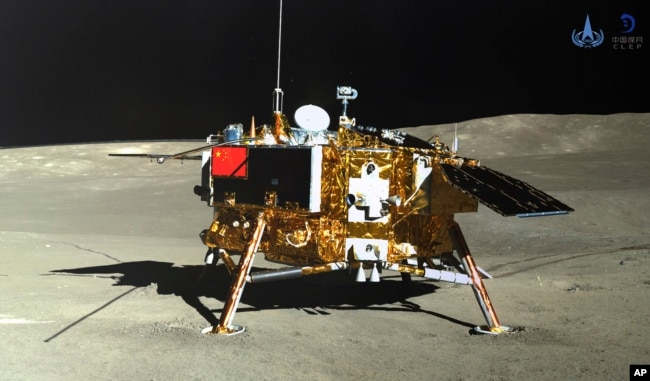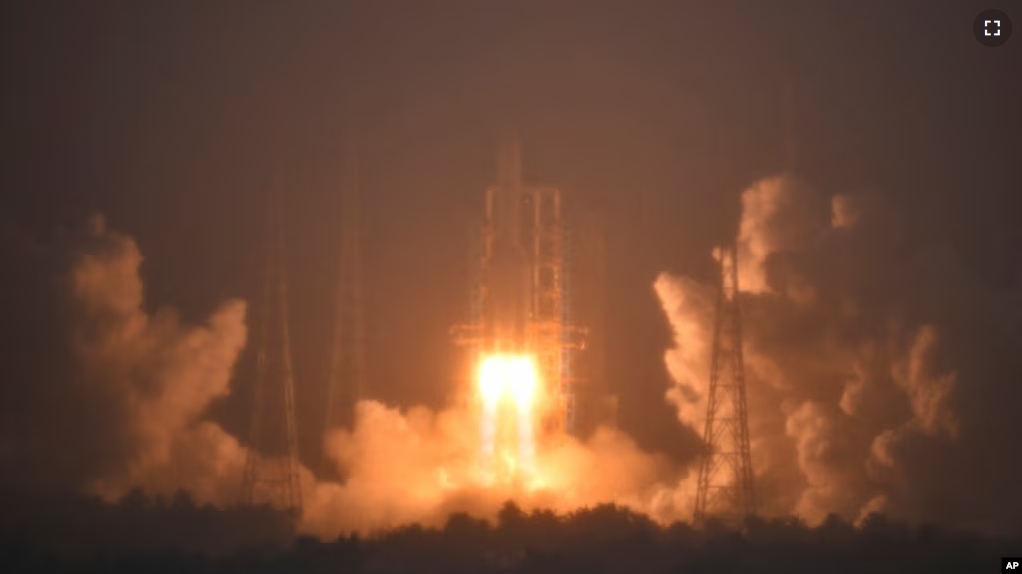China launched a spacecraft to the moon’s far side on Friday in a mission that aims to bring lunar soil and rocks to Earth.
A Long March 5 rocket carried the unmanned spacecraft, called Chang’e 6, to space. The launch took place at China’s Wenchang space center in southern Hainan province. Chinese space officials declared the launch a success.
Chinese officials have said the spacecraft will attempt to land in an area of the South Pole called the Aitkin Basin. The area is known as the far side of the moon because it permanently faces away from Earth.
NASA says the Aitkin Basin is the largest impact basin on the lunar surface. The distance from the basin’s lower depths to its highest points is estimated to be over 15 kilometers. That is nearly twice the height of Earth’s tallest mountain, Mount Everest.
If it makes a successful landing, mission leaders on the ground will direct the spacecraft to collect soil and rock from the lunar surface. During its planned 53-day mission, Chang’e 6 is expected to use its robotic equipment, including a drill, to identify and collect up to two kilograms of lunar material.
China’s spacecraft will be carrying payloads from France, Italy, Sweden and Pakistan. U.S. law bans the American space agency NASA from cooperating – either directly or indirectly – with China on space operations.
Under NASA’s current plans for its Artemis program, U.S. astronauts are expected to land near the South Pole in 2026. This would represent the first human landing on the lunar surface since NASA’s Apollo 17 mission in 1972.

China has additional unmanned lunar missions planned as well. Chang’e-7, in 2026, will aim to further explore the south polar area, including searching for water ice. In 2028, Chang’e-8 will carry out a series of technology tests in preparation for building a long-term science base on the moon. China is seeking to put its astronauts on the moon by 2030.
It is not the first time a Chinese spacecraft has collected material from the lunar surface. The country’s Chang’e 5 spacecraft traveled to the moon in late 2020 and brought back about two kilograms of moon rocks and dust.
The mission was carried out in an area known as Oceanus Procellarum. It sits on the western edge of the near side of the moon, an area believed to have had intense volcanic activity in ancient times.
But the lack of volcanic activity on the moon’s far side means there will be more craters to study that were not affected by ancient lava flows. This could give scientists new chances to learn more about the moon and the solar system’s early development.
The Chang’e 5 mission made China only the third nation to collect lunar material and bring it to Earth, after the United States and the Soviet Union. The last such mission was in 1976, when an unmanned Soviet spacecraft collected 170 grams of moon material.
America’s moon exploration program included six flights from 1969 to 1972. Those missions resulted in astronauts collecting a total of about 400 kilograms of lunar rocks and soil.
Leonard David is the writer of the book Moon Rush: The New Space Race. He told Reuters news agency that if successful, the upcoming mission would be “a milestone-making event.” David added that the material collected from the moon’s far side should help researchers “fill in the blanks” about unknown details of the moon’s formation.
I’m Bryan Lynn
Reuters and China Daily reported this story. Bryan Lynn adapted the reports for Learning English.
__________________________________________
Words in This Story
mission – n. an important project or trip, especially involving space travel
basin – n. a wide area of land that is more or less round in shape and lower than its surroundings
impact – n. the force or action of one object hitting another
drill – v. to use a tool or machine to make holes in a hard substance
payload –n. an amount of a material, measured by weight, that is take from one place to another by a vehicle
crater – n. a hole left in the ground by an object that hits it with a huge force
lava – n. hot melted rock that comes out of a volcano
milestone – n. an important event in history of the development of a person or group
fill in the blank – idiom to provide missing information
